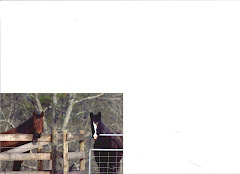How the Song of Solomon, the Song of Songs, got into the Bible is a mystery to me. It is a beautiful, erotic, lyrical celebration of human love, explicit in descriptions of the beloved and the acts of loving. I never did buy my preacher’s analogy of our love for God being like the love in this book. “Your rounded thighs are like jewels, the work of a master hand.” Doesn’t sound like Godly love to me. I have noticed that preachers do not as a rule preach from this book. Expounding on rounded thighs and navels and bellies and breasts could be a problem for a G- rated sermon, I suppose.
Our Puritan and Calvinist religious mothers and fathers must have squirmed when they read this book. Or maybe they were able to do the Gnostic thing and disembody the images, make them more “spiritual”. It would have been difficult but it is easier, more comfortable sometimes to live in our heads than our bodies. What a pity!
Solomon must have tried to describe most of his fabled thousand wives( at least sixty queens, eighty concubines and maidens without number) in this book. Some are dark, some are fair, some are radiant and ruddy. Some have necks like towers and others have noses like the tower of Lebanon. Loving and being loved is celebrated in this little book.
This book does not tell us how to live with the one we love, though, and that is much more difficult than singing songs about lips, thighs and necks. How I wish Solomon in all his wisdom had given us some help that process. I guess when you are king and have minions galore as well as many wives, your problems are a bit different from mine when it comes to living with someone, loving them day in and day out.
Michael and I are celebrating our thirty ninth anniversary this year. Our friends Mahan and Janice are celebrating the fiftieth year of their marriage. Many of my friends have been married a long time and I have noticed a few things about these relationships that are interesting.
The first paradox... You grow to be more like each other and more like yourself at the same time. In our partners we often find the irritating differences are our growing edges. One person’s need for structure bumps up against the other’s need for spontaneity. One who loves ballet marries a football fan. One who needs verbal expressions of love marries someone who struggles to verbalize feelings. What seems to be an irritant can grow a pearl... the pearl of insight and change that leads to a deeper level of loving. At the same time I am changing in ways that meet my loved one’s needs, I also can change to become more truly who I was created to be. It is not an either-or process. It is both and. By learning to love each other’s differences (not just “accept” them), affirming and expressing our own unique gifts, we become a new creation. We can be like the two oak trees growing side by side in our yard. The branches blend together, both trees lean slightly towards each other, and they are stronger in winter winds because they are side by side, separate but connected.
The second paradox... These couples know when to hold them and when to fold them. Nobody lives with someone else without conflict or disagreement, anger or despair. It comes with the territory. Couples who live with love know how to figure out what is worth fighting for, what is worth fighting over and what is worth letting go. And most of the time, most of what we fight for or over is not really worth it. Letting go of the need to be right, the need to do it your way can lead to a safe place where anger and conflict can be creative, not destructive.
Living in love with another person is one way we can learn how to love God here on earth, to be transformed by the power of love, to staying the course. The prayer of Saint Francis is my model prayer for this kind of loving. Today I will pray this prayer as I live with Michael into our new/old marriage becoming one yet still two.Lord, make me an instrument of Thy peace; where there is hatred, let me sow love; where there is injury, pardon; where there is doubt, faith; where there is despair, hope; where there is darkness, light; and where there is sadness, joy. O Divine Master, grant that I may not so much seek to be consoled as to console; to be understood, as to understand; to be loved, as to love; for it is in giving that we receive, it is in pardoning that we are pardoned, and it is in dying that we are born to Eternal Life. Amen.
Subscribe to:
Post Comments (Atom)









No comments:
Post a Comment